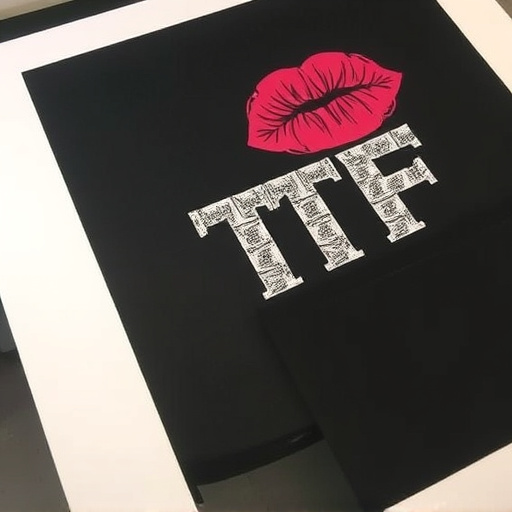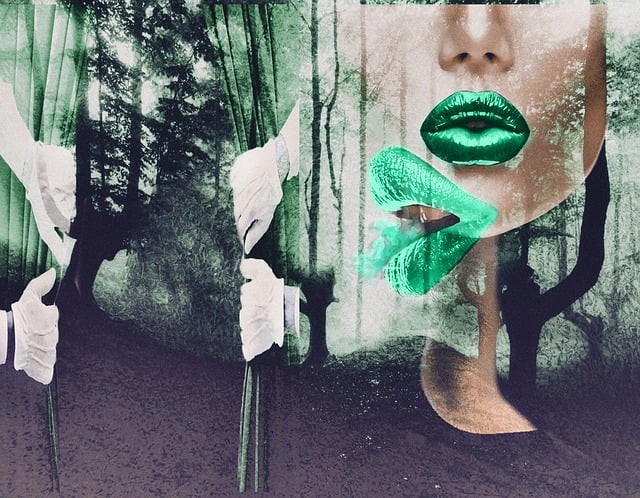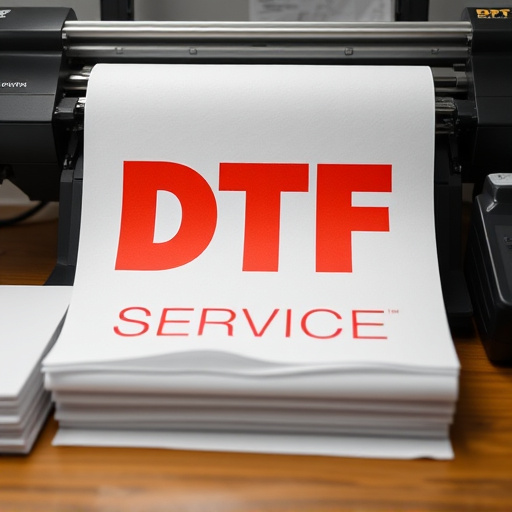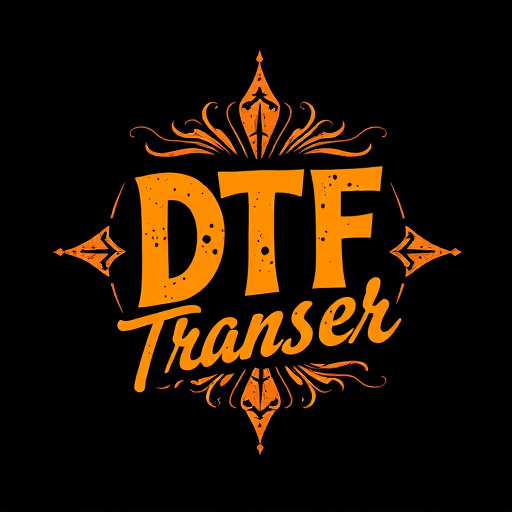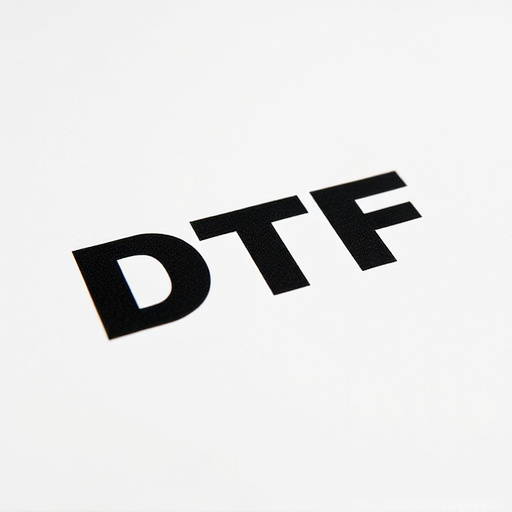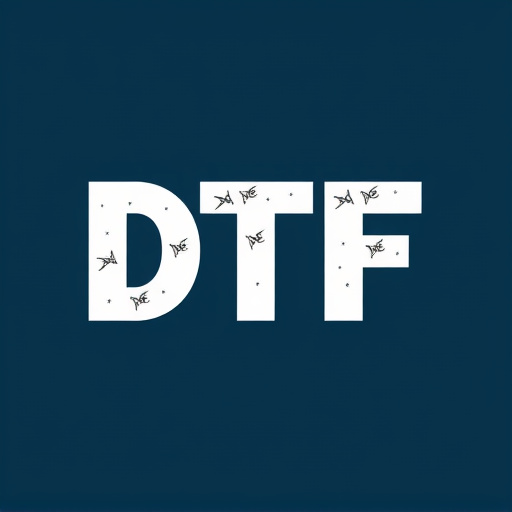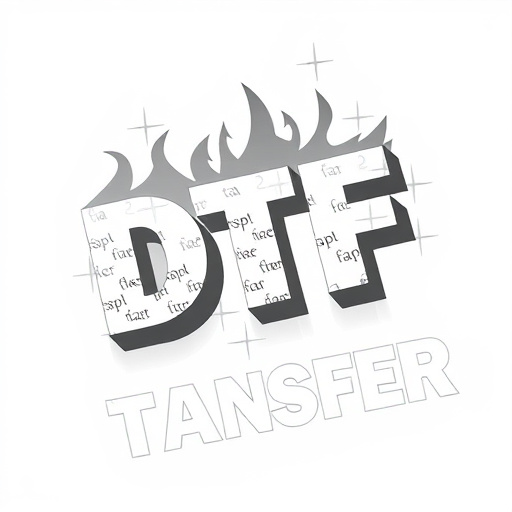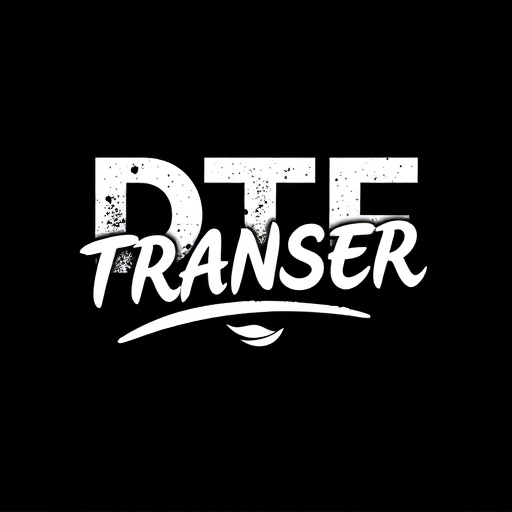Direct-to-film (DTF) transfers are revolutionizing the film industry by directly printing high-quality artwork onto film stock, creating immersive and visually stunning experiences. This technique offers unmatched precision for digital art files, from paintings to complex designs, with remarkable detail, color accuracy, and aesthetic quality. DTF artistry enables personalization, allowing artists to create unique visual experiences tailored to specific films or applications, fostering stronger brand connections with audiences. The process involves understanding client goals, conceptualization, digital preparation, and printing for seamless transfers. DTF transfers merge artistic expression and cinematic production, enhancing live-action films and animations, and are suitable for various media, including clothing, signage, and home decor. Their growing popularity in Hollywood projects demonstrates the versatility and impact of DTF art, positioning it as a key trend shaping the future of cinema.
“Unleash your creativity with personalized artwork tailored for direct-to-film (DTF) applications. This comprehensive guide explores the art and science of DTF transfers, a game-changer in cinematic visual enhancement. Discover how customization deepens audience engagement. From understanding DTF fundamentals to choosing optimal materials, you’ll delve into the process, benefits, and real-world success stories. Learn from case studies showcasing the transformative power of personalized DTF artwork in bringing films to life with stunning visual detail.”
- Understanding Direct-to-Film (DTF) Transfers: A Comprehensive Guide
- The Role of Personalization in DTF Artistry
- Process of Creating Customized DTF Artwork
- Benefits and Applications of DTF Transfers for Films
- Choosing the Right Materials and Techniques for Optimal Results
- Case Studies: Successful Implementation of Personalized DTF Art in Cinematic Projects
Understanding Direct-to-Film (DTF) Transfers: A Comprehensive Guide

Direct-to-film (DTF) transfers are a cutting-edge technique revolutionizing the way artwork is brought to life on various media, particularly in the film industry. This innovative process involves transferring high-quality images or graphics directly onto film stock, creating an immersive and visually stunning final product. Unlike traditional printing methods, DTF offers unparalleled precision, ensuring every detail of the artwork is accurately represented.
The process begins with digitizing the desired artwork, which can range from intricate paintings to complex graphic designs. This digital file is then optimized for the specific film stock and resolution requirements. The image is precisely aligned and printed directly onto the film, layer by layer, using specialized equipment. This method allows artists and filmmakers to achieve remarkable levels of detail, color accuracy, and overall aesthetic quality, making DTF transfers an appealing choice for creating memorable visual experiences on the big screen.
The Role of Personalization in DTF Artistry
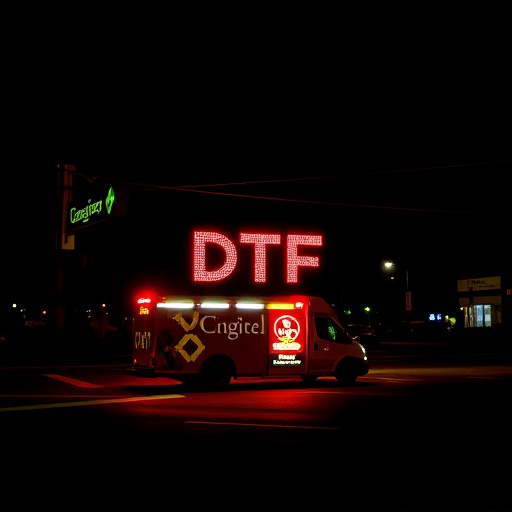
In the realm of direct-to-film (DTF) artistry, personalization plays a pivotal role in creating captivating and unique visual experiences. When it comes to DTF transfers, the ability to tailor artwork precisely to a specific film or application opens up a world of creative possibilities. This customization allows artists and designers to incorporate intricate details, personalized messages, or even custom colors that resonate with the intended audience. By integrating individual elements, brands can forge stronger connections with their customers, ensuring that each piece becomes a distinctive representation of their identity.
Personalized DTF artwork adds an extra layer of depth and engagement, transforming ordinary films into extraordinary canvases. It enables artists to tell stories, convey emotions, or communicate specific messages through tailored designs. Whether it’s for advertising, branding, or decorative purposes, this level of customization ensures that the final product stands out in a crowded market, leaving a lasting impression on viewers.
Process of Creating Customized DTF Artwork
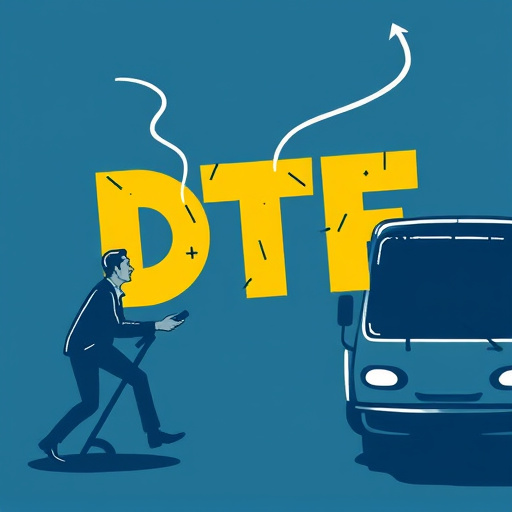
Creating personalized artwork for direct-to-film (DTF) application involves a meticulous process tailored to meet specific requirements. It starts with understanding the client’s vision and goals, followed by conceptualization where artists sketch and design unique graphics suited to the intended film medium. This stage is crucial for ensuring the final product aligns with the client’s expectations.
Once the concept is finalized, the artwork undergoes digital preparation, involving vectorization to make it scalable without quality loss. This is essential for a seamless DTF transfer process. Skilled artists use specialized software to refine colors, add subtle textures, and ensure compatibility with various film types. The result is a custom-made graphic ready for printing and application directly onto the chosen surface.
Benefits and Applications of DTF Transfers for Films
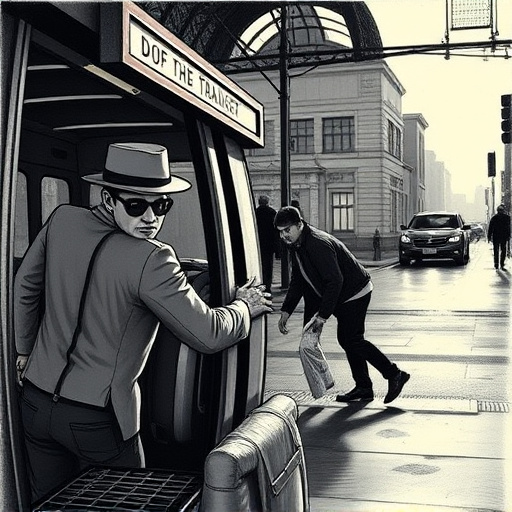
Direct-to-film (DTF) transfers offer a game-changing approach for creating personalized artwork, revolutionizing the way films are produced and tailored to specific needs. This innovative process allows artists and filmmakers to create intricate designs and apply them directly onto film stock, enabling a seamless fusion of visual artistry and cinematic magic. One of the key benefits is its versatility; DTF transfers can accommodate various art styles, from delicate illustrations to bold, vibrant graphics, ensuring each film becomes a unique masterpiece.
The applications are vast and exciting. Whether it’s enhancing live-action films with custom backgrounds or creating immersive animated sequences, DTF transfers provide a cost-effective and efficient solution. This technique is particularly valuable for independent filmmakers and small production houses, offering them the resources to bring their creative visions to life without breaking the bank. By combining traditional artistry with modern technology, DTF transfers open up endless possibilities for storytelling through cinema.
Choosing the Right Materials and Techniques for Optimal Results
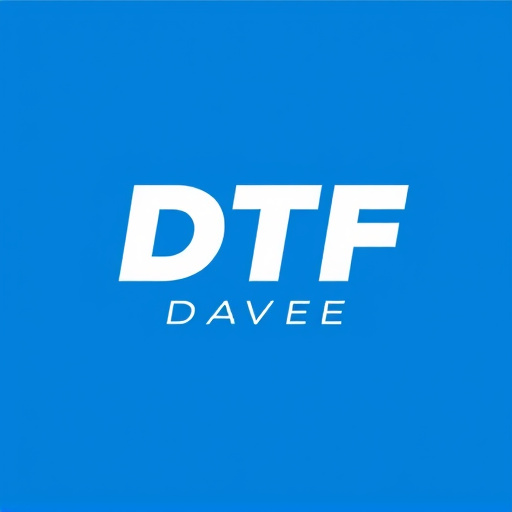
When creating personalized artwork for direct-to-film (DTF) applications, selecting the appropriate materials and techniques is paramount to achieving optimal results. The first step involves understanding the intended use of the final product. For instance, if the artwork is destined for a vinyl cut or heat transfer, specific mediums like vector graphics or high-resolution digital art are ideal as they maintain sharp lines and details during the cutting process. These choices ensure the DTF Transfer accurately replicates the original design without pixelation or blurring.
Techniques also play a crucial role in material compatibility and durability. For outdoor applications, consider using weatherproof inks and adhesives to safeguard against fading, chipping, or peeling. In contrast, indoor use might warrant a more diverse palette of vibrant colors and non-toxic materials, enhancing the visual appeal while ensuring safety for occupiers. Experimenting with different techniques allows artists to tailor their creations to specific DTF Transfer requirements, be it for clothing, signage, or home decor.
Case Studies: Successful Implementation of Personalized DTF Art in Cinematic Projects
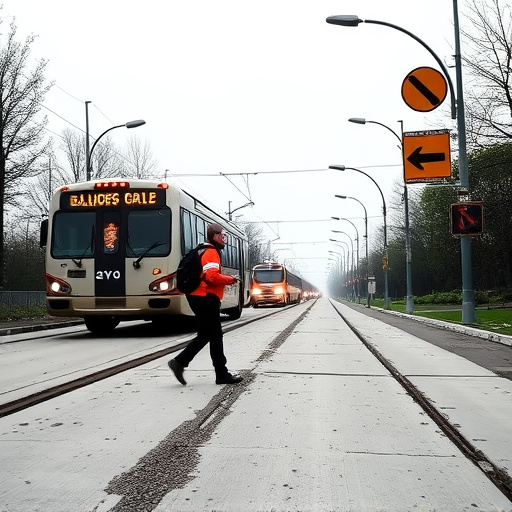
Personalized artwork, tailored for direct-to-film (DTF) application, has seen remarkable success in recent cinematic projects. This innovative approach allows artists to create unique visual elements that seamlessly integrate into the final product, enhancing both aesthetic appeal and narrative depth. Case studies from major Hollywood productions demonstrate the effectiveness of DTF Transfer techniques. For instance, in a high-profile fantasy film, intricate backdrops were digitally painted to match specific scenes, adding vivid detail that captivated audiences. Similarly, an action-packed thriller utilized personalized props, crafted using DTF methods, to bring explosive set pieces to life, setting new standards for visual storytelling.
These successful implementations highlight the versatility and impact of personalized DTF art. By combining traditional artistic skills with modern digital technologies, artists can create stunning visuals that push the boundaries of cinematic expression. This trend is poised to continue, as filmmakers embrace ever more creative ways to immerse viewers in their stories, ensuring a future where DTF Transfer plays a pivotal role in shaping the cinematic landscape.

